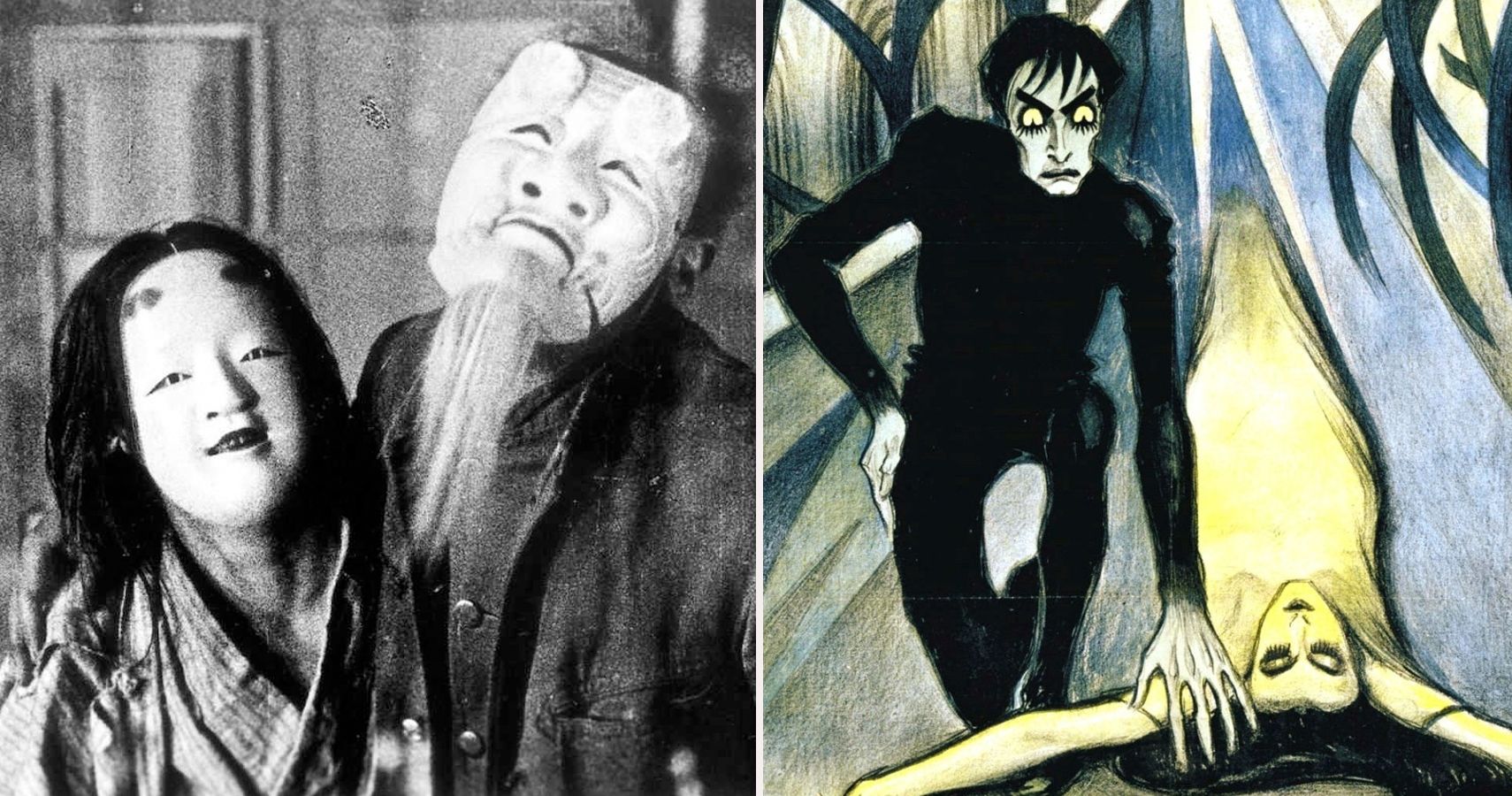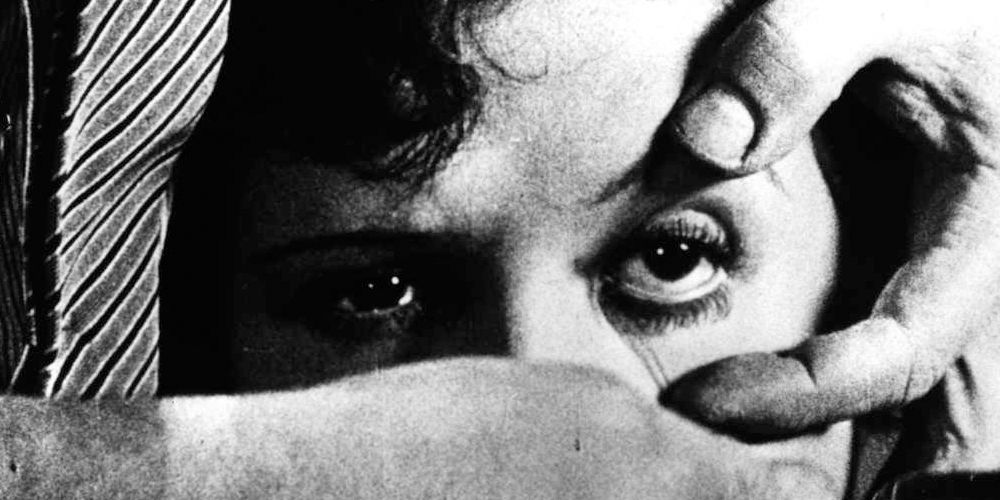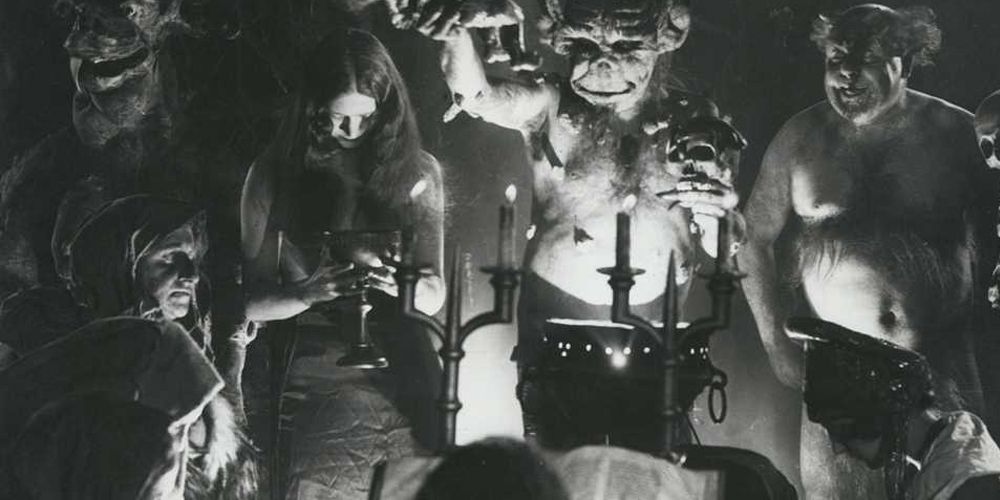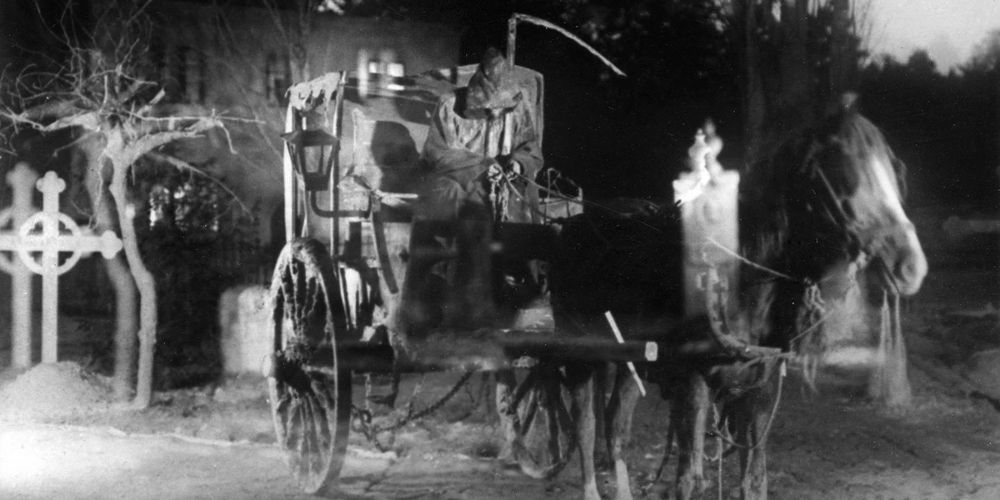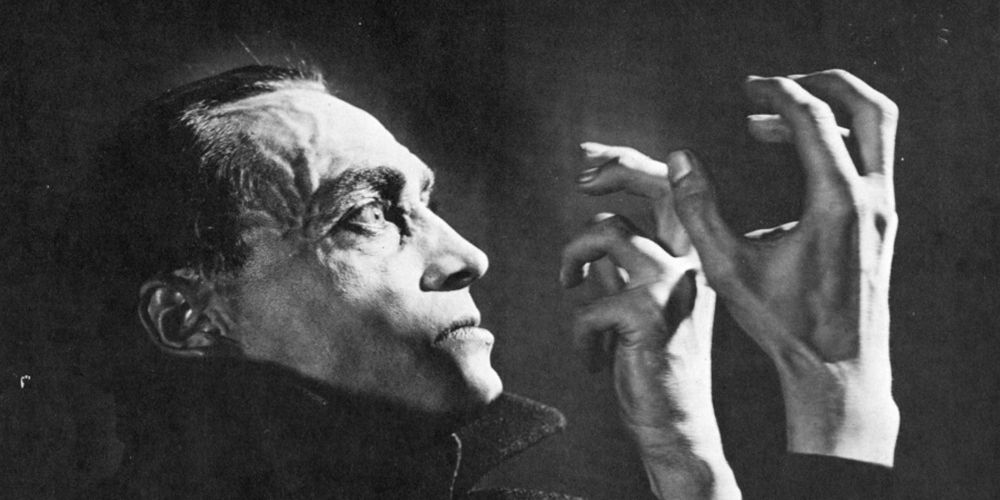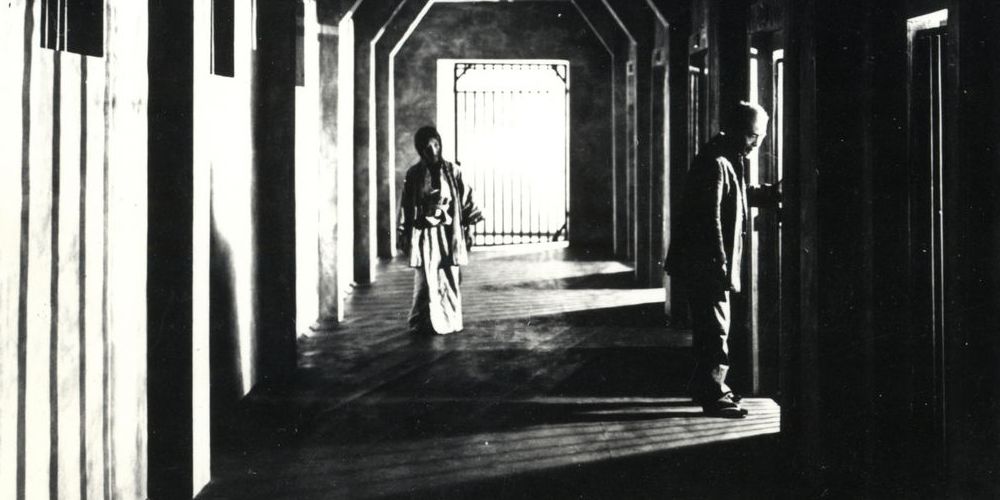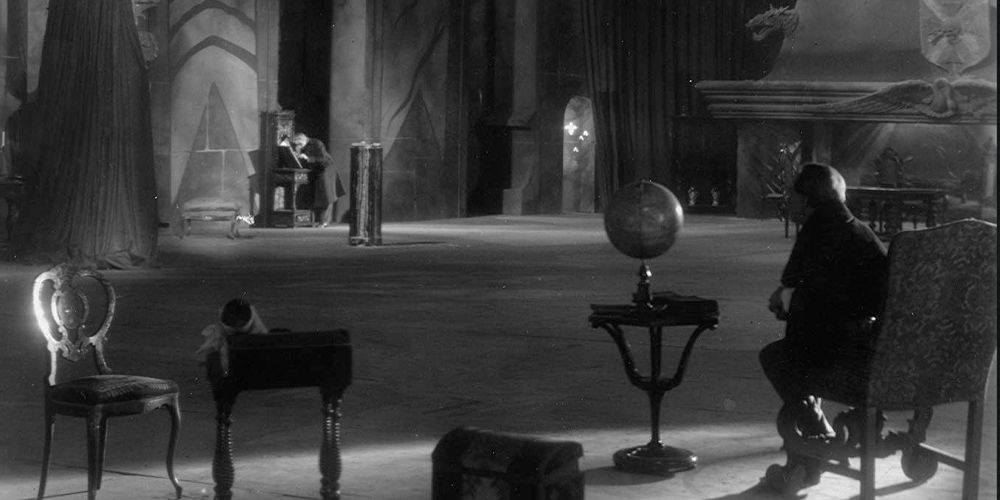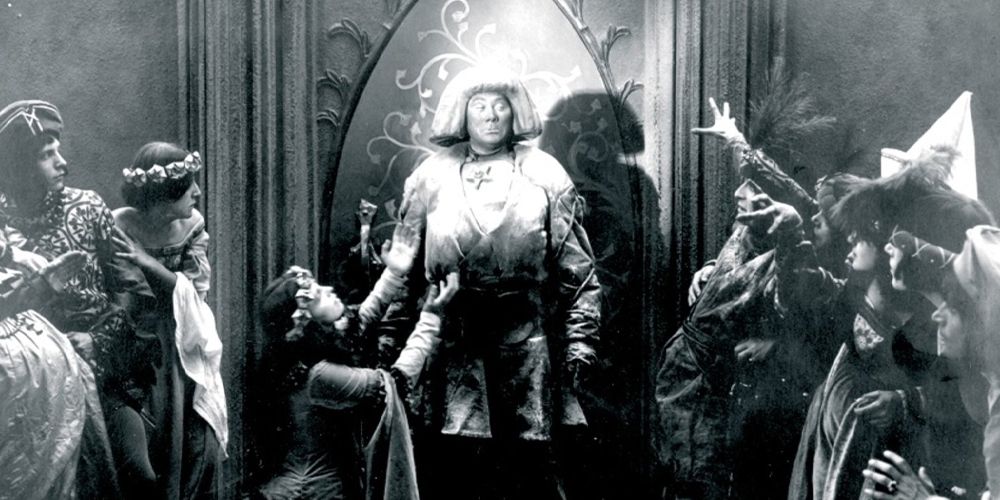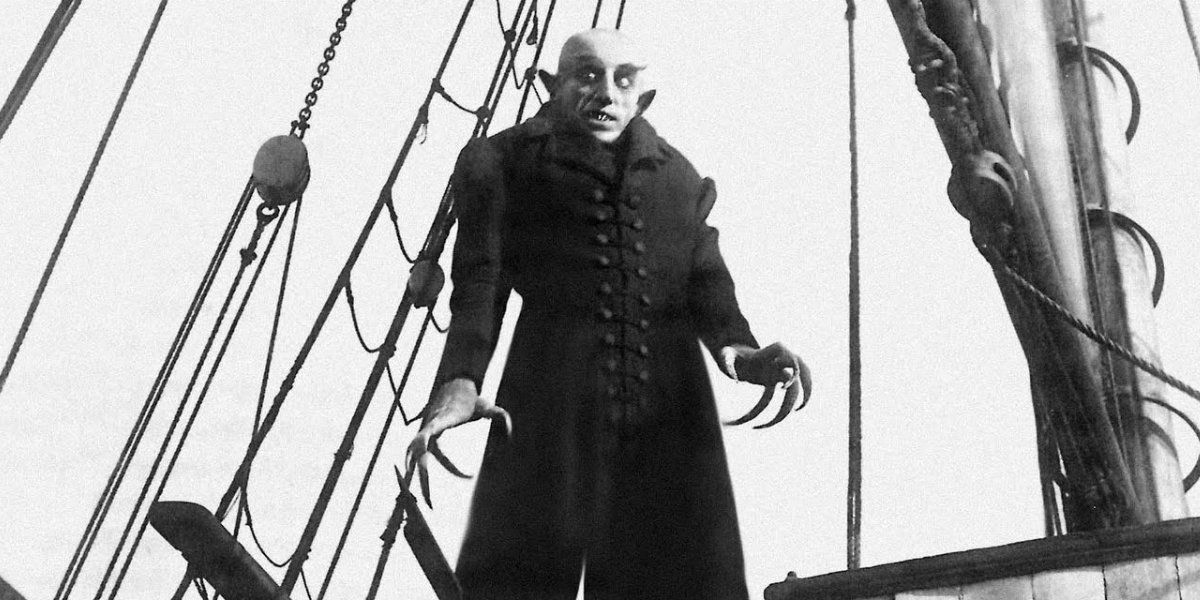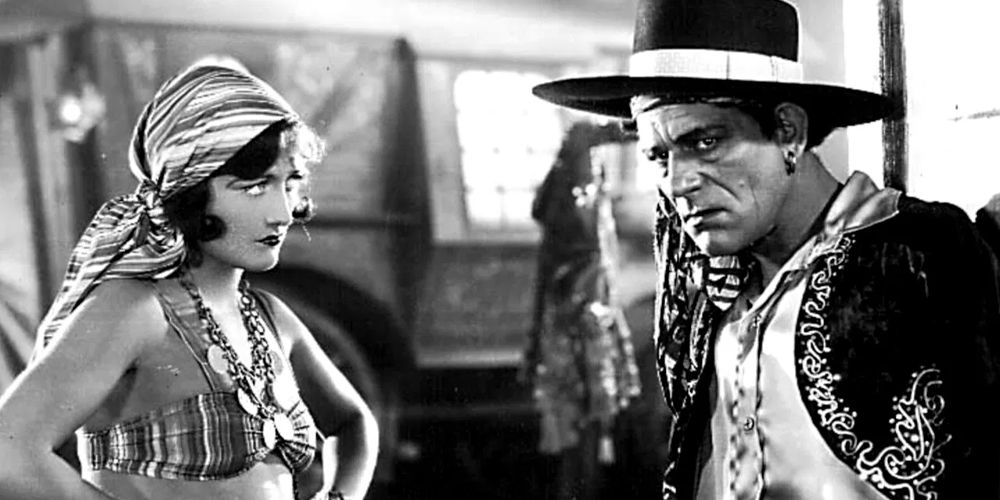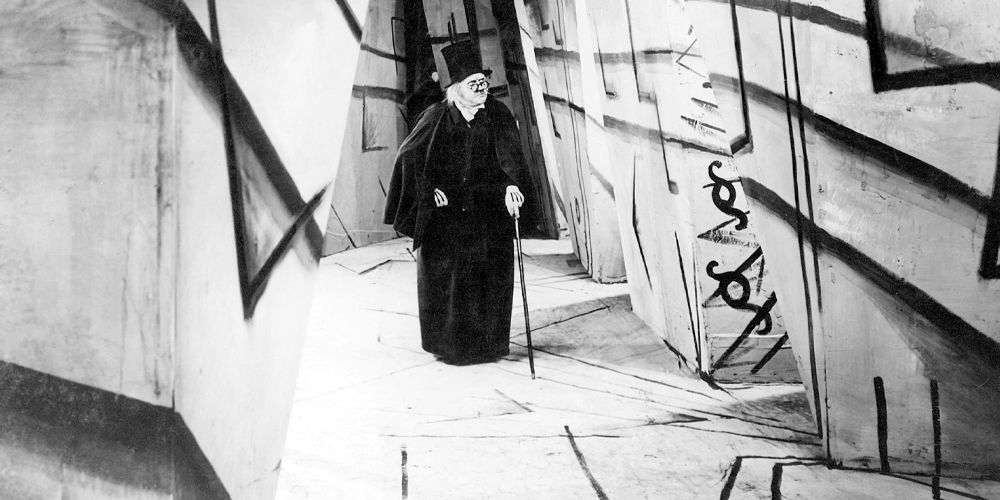Although they may lack the immediacy of their modern counterparts, horror films from the silent era have aged better than most other genres. The intimacy provided by the normally claustrophobic sets combined well with the dream-like presentation afforded by the otherworldly and expressionist visuals. Even as sensibilities change and societies adapt, the primal fears of the unknown and unseen that cause audiences to shriek back in terror have remained consistent.
The silent era is packed with terrifying horror films that are still effective in 2020, even if some notable releases have become increasingly difficult to locate. Here are 10 silent horror movies that are worth tracking down today.
Un Chien Andalou (1929)
Strictly speaking, Un Chien Andalou is not a horror movie; however, it also happens to feature one of the most unsettling opening sequences of all time. Its disjointed flow, shocking imagery, and illogical narrative structure give Un Chien Andalou a nightmarish tone that lasts throughout its brief 21-minute runtime.
Un Chien Andalou is an experimental indie film that, even after all these years, is still capable of making audiences feel uncomfortable.
Häxan (1922)
Häxan: Witchcraft Through the Ages explores historical information learned through artifacts like the Malleus Maleficarum to craft a horror masterpiece.
Presented as a documentary, Häxan centers around humanity's often destructive reactions to things they do not understand, framed through the witch trials born out of a lack of knowledge of mental illnesses. Its imagery is still haunting today, while Häxan's themes are timeless.
The Phantom Carriage (1921)
While more of a psychological character study than a straight-up horror film, The Phantom Carriage expertly crafts a sense of dread as the main character, an alcoholic named David, relives key moments from his life while on the brink of death.
The titular carriage is genuinely frightening and holds up remarkably well, as does the embodiment of Death that rides it. The Phantom Carriage is an eerie cautionary tale about alcoholism, self-destructive behavior, and regret.
The Hands Of Orlac (1924)
Robert Wiene is a name worth remembering when it comes to early horror films, and The Hands of Orlac ranks among his very best. After an accident leaves a famed pianist, Orlac, without hands, those of an executed murderer are transplanted in their place. This information drives Orlac insane as he starts to develop violent urges.
Although it does have its expressionist touches, The Hands of Orlac strikes a surprisingly grounded tone for many of its scenes. This dichotomy only makes Orlac's descent into madness all that more unsettling, which is further enhanced by Conrad Veidt's mesmerizing turn as the pianist.
A Page Of Madness (1926)
A Japanese horror film that was originally thought to be lost to time, A Page of Madness is a haunting study about how fear and emotions can shape reality. Through the use of emotive acting, uncanny sets and costumes, and strong writing, A Page of Madness crafts an experience that is memorable and tragic.
Feeling guilty after years of mistreatment led to his wife being locked up in an asylum, a husband takes a job as a janitor to be closer to her. Eventually, he begins to develop fantasies that threaten to tear apart the fabric that separates fiction from fact.
The Fall Of The House Of Usher (1928)
Not to be mistaken with a short film released during the same year, Jean Epstein's The Fall of the House of Usher is a gothic masterpiece based on Edgar Allan Poe's respected short story. An unnamed man is invited by Roderick Usher to the Usher House, a mansion on the verge of collapse. Roderick has become fixated with a painting of his wife, Madeline, going so far as to believe that each brushstroke takes away another part of her essence.
The Fall of the House of Usher is an experimental horror film that prioritizes atmosphere over logic, with Epstein's direction combining splendidly with the set design to present the Usher House as a living entity. The film is almost beautiful at times, albeit in the same way that a nightmare is only slightly removed from a dream.
The Golem: How He Came into the World (1920)
The only entry of The Golem trilogy that has survived the passage of time, The Golem: How He Came into the World is one of the earliest examples of German expressionism. The Golem harbors many similarities to Frankenstein, as both stories focus on humanity's desire to play god.
In this case, a Rabbi awakens a Golem in order to protect his community from the threat of the Roman Empire. Naturally, things do not quite work out as planned, although the film is slightly more optimistic than Frankenstein.
Nosferatu: A Symphony Of Horror (1922)
As anyone who has ever attended a film class presumably knows, F. W. Murnau's Nosferatu is one of the most revered horror movies of all time. Loosely based on Bram Stoker's Dracula, Nosferatu represents German Expressionism at its best, with the sickly-looking Count Orlok earning his place as one of cinema's greatest antagonists.
Although not particularly terrifying, Nosferatu set the standard for vampires in cinema. In fact, it could be argued that a movie has yet to be created that frames vamps in as frightful of a way as this 1922 classic.
The Unknown (1927)
While perhaps not as famous as 1925's Phantom of the Opera, 1927's The Unknown has arguably Lon Chaney's best acting, along with serving as a prime example of Tod Browning's innate talent for directing horror. Chaney's Alonzo is a thief masquerading as an armless circus performer who falls in love with his act's assistant, Nanon, who happens to be afraid of people with arms.
In order to keep his secret and also win the love of Nanon, Alonzo goes to some incredible and deranged lengths. The third act is a tour de force of psychical and psychological horror that boasts brilliant acting by Chaney and a myriad of twists, each one more shocking than the last.
The Cabinet Of Dr. Caligari (1920)
Incomprehensible set designs, inhuman shadows, uncomfortable camera angles, grisly murders, and an authoritative madman, The Cabinet of Dr. Caligari is the definitive German expressionist film and a must-watch for anyone remotely interested in horror.
Directed by Robert Wiene, this 1920 classic tells the story of a deranged hypnotist who uses a sleepwalking man as a tool for murder; at least, that is what appears to be happening early on in the story. Like quite a few of the best horror movies from the silent era, The Cabinet of Dr. Caligari has an interest in the perception of reality and the fragility of sanity; more importantly, it is an influential film that is still a unique and terrifying watch in 2020.

